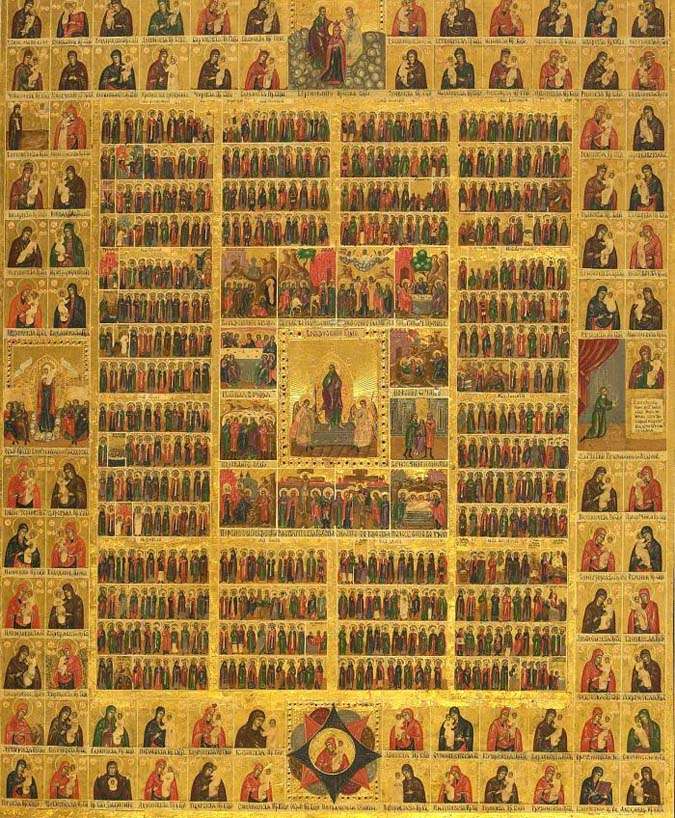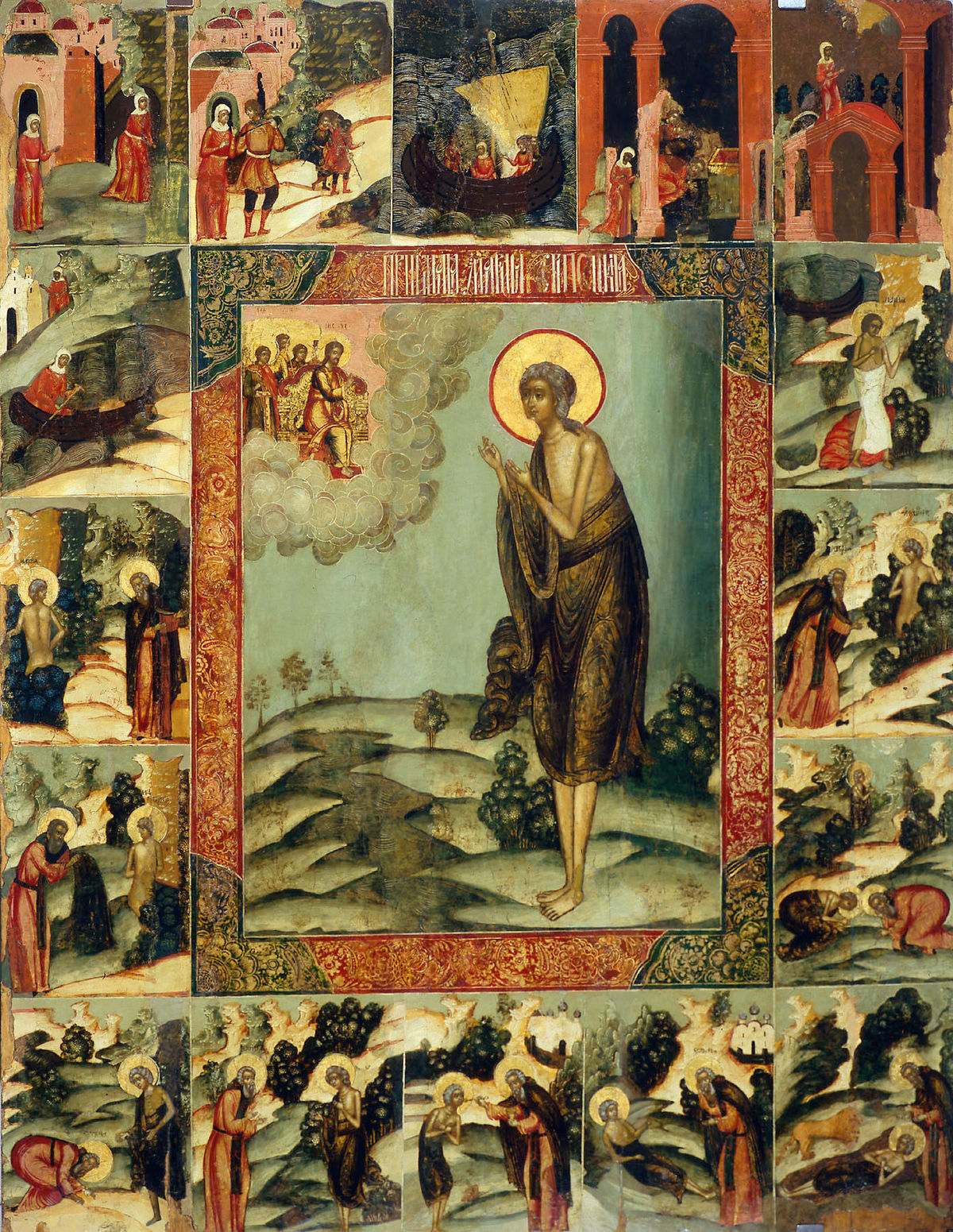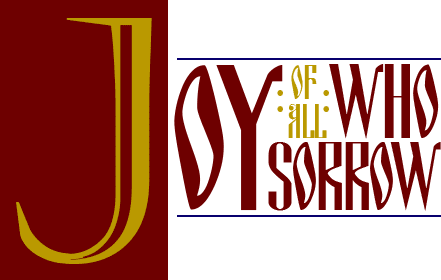The Iveron Myrrh-Streaming Icon from Hawaii will be at our church: Sunday December 18, 8:30 pm. Glory to God!
Author: Joy of All Who Sorrow
Church Bulletin, Oct. 23-Nov. 6 (our Feast Day is Sunday, Nov. 6!!)
Church Bulletin, Oct. 10-23 (Includes Oak Glen details for Oct. 23)
Church Bulletin, Mar 7-19
Church Bulletin, Feb. 21-March 6
Church Bulletin, Feb. 14-20, 2022
This Week’s Devotional Guide – 1/24
Church Bulletin, Feb. 1-13, 2022
Orthodox Feasts in September I

By Mihail Markasev
The Church’s new year arrives right after the commemoration of the Beheading of the Forerunner on August 29. Summer ends with the harvest of a godly seed that testifies to the truth of the Gospel, sealing its witness with the blood of the righteous. Fruit of righteousness always comes with a cost, which is why the blood of the martyrs is the seed of the Church.
The new year begins with prayer to the Lord of all to “bless the crown of this year with Thy goodness” and preserve in safety our rulers and cities. Yet even while the prayer is lifted, the stark reality of the end is present and near: like ripened fruit and fleeting days of summer, all glories of men, of kings, of cities, will ripen and dissolve into the dirt from which they were taken, and from which they will be recalled on Judgment Day to be renewed in the year that knows no end.
But on the Church calendar the end is a beginning—the clearing away of what is passing in order to make room for what is eternal. For all its beauty, this earth of ours is still under a curse, and the all-encompassing shadow of our ancestral fall casts its dark imprint upon our lives, even as God declared to Adam, our father, “cursed is the ground for thy sake: in sorrow shalt thou eat of it all the days of thy life. Thorns also and thistles shall it bring forth to thee” (Gen. 3:17–18). Void of its life-giving communion with God, the earth is barren and all its glory wilts under death’s power. Such is our lot under the sun; such is the end of all our years….
Therefore, it is right and meet that the Church’s first major feast is a token of life and hope, springing from the parched soil of humanity. In blessing “the crown of this year with [His] goodness,” God, first of all, produces the blessed soil from which the tree of life sprouted. The Mother of God, the Most Pure Theotokos, was born on September 8, begotten of two barren elderly parents, Ss. Joachim and Anna, “for from a barren stem He hath brought forth His Mother, a life-bearing branch.” How could a “life bearing branch” proceed from a “barren stem”? The Lord of Creation Who formed the old Adam from the earth and breathed His soul into him, now prepares the “soil”—the Virgin Mary—to bring forth the new Adam, a life-giving spirit (1 Cor. 15:45).
Thus, the shadow of death is but a shadow of the resurrection of all, for the God Who is the Alpha is also the Omega, and He Who is First is also the Last. And since the fallen world could not ascend to God, God visited His world by “making a living heaven on earth” in bringing forth her who would become His temple. As we welcome the feast of the Church’s new year, may it also become a new beginning for us, who—in spite of our spiritual barrenness—bare the seed of faith, hope, and love, which grows into a sacred temple of the Most Holy Trinity.
St Mary of Egypt, the Repentant Desert Dweller

By Mihail Markasev
If the Fourth Sunday of Great Lent points us to the peak of the love of God, as we ascend the Divine Ladder as presented by St. John Climacus, then the Fifth Sunday of Lent, which commemorates St. Mary of Egypt, leads us to understand her embodiment within the pit of sin. But now we understand how she reveals herself to us an “exemplar of repentance,” who through the power of the Cross of Christ “cast away the weakness of nature and bravely contended against Satan,” taking the Kingdom of God by conquering her own failed self.
In addition to the Fifth Sunday of Lent, St. Mary’s feast is celebrated on April 1, known to us as April Fools Day. This peculiar coincidence only confirms that Apostle’s words to the church at Corinth:
“Because the foolishness of God is wiser than men, and the weakness of God is stronger than men. For you see your calling, brethren, how that not many wise according to the flesh, not many mighty, not many noble, are called. But God has chosen the foolish things of the world to put to shame the things which are mighty.” (1 Cor 1:25-27)
The life of St. Mary of Egypt overturns the modern concept of “being born this way,” in other words, as a genetic predisposition or even social conditioning. Her path points to the power of repentance as being definitive after a lifetime of sin, and to the saving, transforming, and deifying grace of the Holy Spirit as having the last word in a soul considered least likely to attain sainthood. Indeed, by forsaking the wisdom of this world with its pursuit of pleasure, power, and pride of life, Mary embraced the seemingly foolish wisdom of God, encouraging us through her example to “take by force” the Kingdom of Heaven (Matt 11:12), promised to all who seek to unite their hearts and lives to the Heavenly King.
The Sunday of Mary of Egypt follows the Saturday of the Akathist to the Theotokos, since it is only through the prayers of the Mother of God that Mary the Egyptian harlot was given repentance, and by God’s grace became our righteous mother, wielding the sword of abstinence as she severed the “snare of the soul and the passion of the body.” And if that seems daunting to us today, then let us learn from our Righteous Mother Mary of Egypt that “what is impossible with men is possible with God.” (Luke 18:27)

